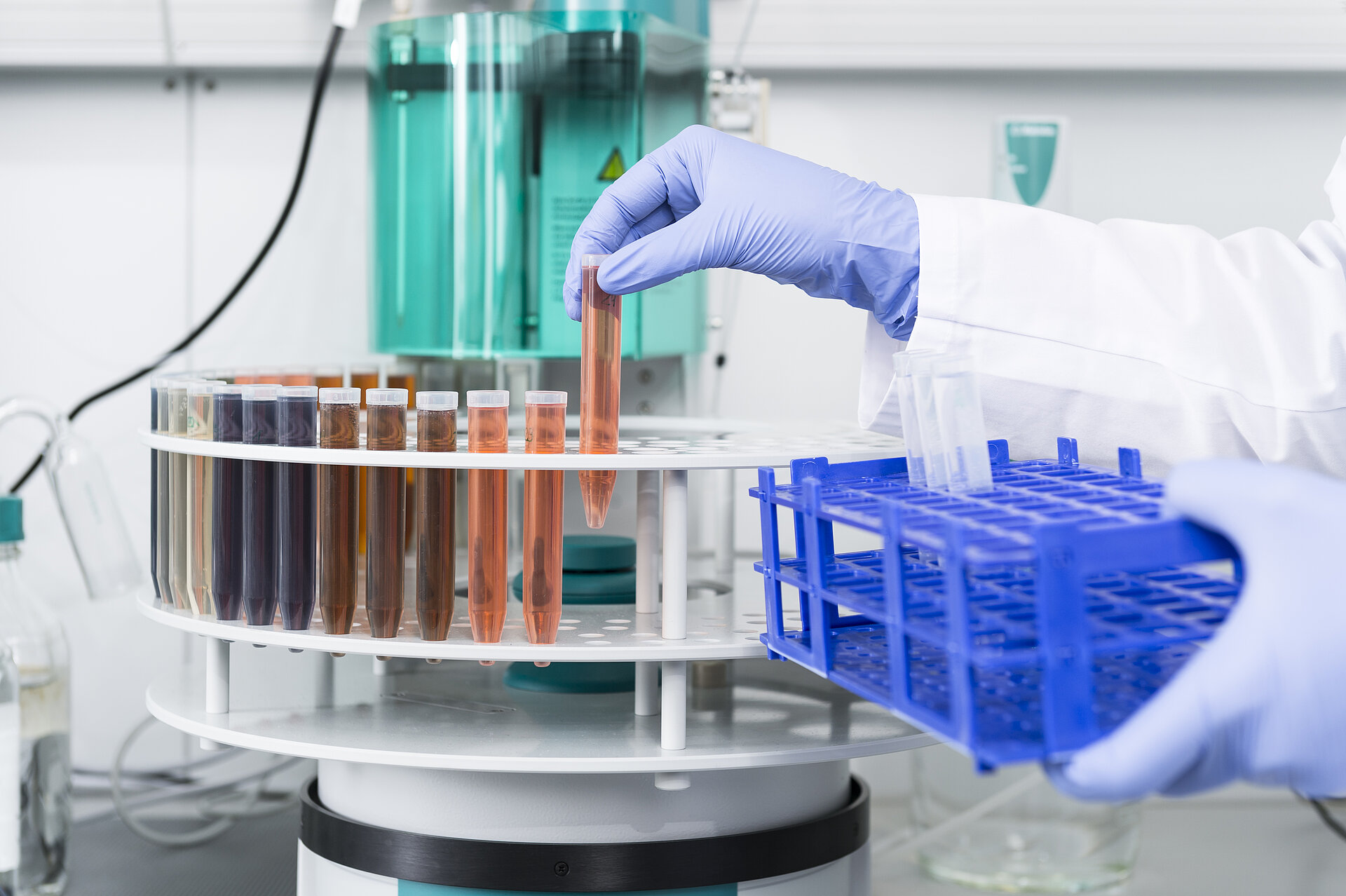Chemical-Analytical Testing
Safe products and materials that are tested for harmful substances and thus meet the legal requirements are a must for all manufacturers, consumers and importers.
For many years, our chemical analysis department has been testing leather, collagen, coated textiles, textiles, plastics, composites and products for their content and harmful substances, compliance with defined specifications such as RAL, CADS, tests according to OEKO-TEX® standards and their composition. Material identification using spectroscopic, thermoanalytical methods and classic chemical separations are part of our everyday work. We use modern instrumented analytical procedures and classic chemical analysis methods for this purpose.
In addition to the application of the standardised procedures, we are always ready to take up the challenge of establishing new analytical procedures.
We would be pleased to advise you on questions concerning the chemistry of your materials and the interpretation of the test results obtained. In doing so, we draw on our many years of experience with materials combined with an understanding of the technological processes. Our test results give you confidence in reliable products and materials.
We are expanding our range of services in the area of pollutant testing with clearly structured test packages. This makes commissioning pollutant analyses significantly easier, faster, and more cost-effective for manufacturers, dealers, and importers. With these new test packages, customers no longer need to spend time researching and ordering various tests individually.
Regulations (EC) No. 1907/2006 (REACH regulation) and 2019/1021 (POP regulation) were issued to protect human health and the environment from the risks that can arise from chemicals. These legal requirements oblige the product manufacturers, traders and importers to comply with the applicable limit values. A monitoring and control of the products and goods for organic, partly forbidden pollutants is a necessary step in order to guarantee human ecologically harmless products.
Formaldehyde and also formaldehyde-releasing substances are often used as preservatives in the leather, textile and polymer industry. Formaldehyde can be found in resins, binders and can be used to fix dyes and pigments. It can act as a catalyst in both pressure and heat transfer processes.
Formaldehyde is a contact allergen and classified as a CMR substance in Annex XVII (Regulation (EC) No. 1907/2006), Entry 28.Chrome-tanned leather can be manufactured in such a way that no chromium (VI) is formed. Nevertheless, the constant control of chrome-tanned leather and its products for chrome (VI) is essential to ensure consumer protection. The toxic chromium (VI) has a sensitizing and allergizing effect in case of skin contact.
.
Collagen that determines the properties of the leather is characterized using special analytical methods. Key parameters are the hydroxyproline and amide nitrogen content.
5 Tanning agent / tanning type
The used tanning type (for the production of the leather) is fundamental for both semi-finished goods and finished leather. This significantly influences the mechanical properties and further processing of the semi-finished product. Knowledge of the tanner is essential to advertise leather.
6 Inorganic harmful substances
In addition to organic pollutants, inorganic substances are also responsible for an increased health risk. These include, for example, various other heavy metal salts in addition to chromium compounds. Heavy metals are often found in dyes. These compounds can be determined as a content and also as an extractable fraction.
Qualitative tests for specific ingredients (e.g. proteins, PVC and nitrocellulose) are required for the identification of materials. In addition to certain detection reactions, test methods (DSC, TGA, FTIR, UV / VIS and many more) are used for this.



